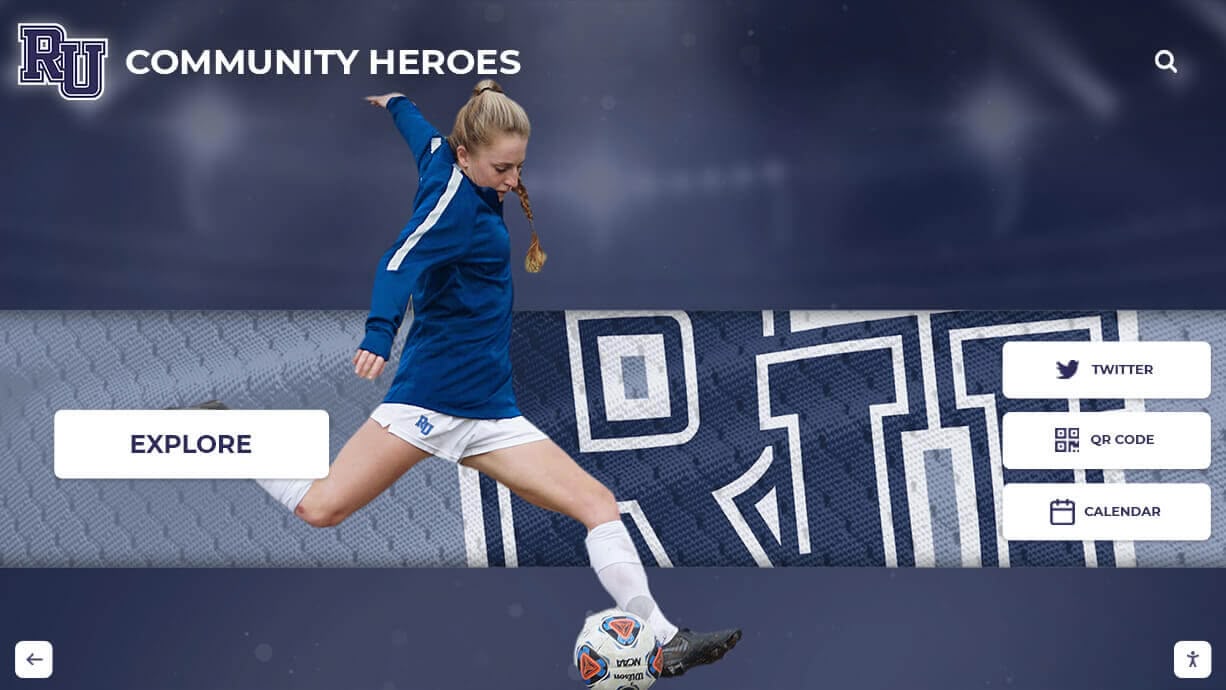Key Takeaways
Comprehensive guide to soccer's all-time top scorers, from Cristiano Ronaldo to Pele. Learn about the greatest goal scorers in football history and how schools can recognize their own soccer legends with modern digital displays.
Understanding Soccer’s All-Time Scoring Records: Why Rankings Vary
Before examining individual goal scorers, it’s essential to understand why definitive all-time scoring rankings prove challenging and why various sources present different numbers for the same players.
The Challenge of Historical Record-Keeping
Unlike modern soccer where every goal across all competitions receives digital documentation and verification, historical goal-scoring records—particularly from before the 1970s—often rely on incomplete documentation, newspaper reports, and unofficial statistics that vary between sources.
FIFA, the international governing body of football, has never released a comprehensive list detailing the highest goal scorers and does not maintain official records spanning all eras, with ongoing debate over whether to include goals scored in friendlies, regional competitions, testimonial matches, and even wartime fixtures.
What Counts as an Official Goal?
Different record-keeping organizations apply varying criteria:
- Competitive Matches Only: Some rankings count only goals in official league, cup, and international competitions, excluding friendlies and testimonials
- Senior-Level Football: Many records focus exclusively on senior professional and international matches, excluding youth, reserve, or amateur competitions
- Club + International: Most comprehensive tallies combine goals scored for all clubs throughout a player’s career plus international team appearances
- All Recognized Matches: Broader definitions include friendly matches, tour games, and exhibition matches for senior teams
This inconsistency explains why Cristiano Ronaldo’s career goals are reported as anywhere from 895 to 950+ depending on which matches sources include in their calculations.
Historical Players and Disputed Records
Earlier eras present particular challenges. In 2020, FIFA recognized Josef Bican, an Austrian-Czech dual international who played between the 1930s and 1950s, as the record scorer with an estimated 805 goals. However, journalist Jonathan Wilson and other football historians note that statistics from this period are often disputed due to inconsistent record-keeping standards.
Similarly, Guinness World Records credits Pelé with the “most career goals” at 1,279, a figure that includes numerous friendly matches and tour games. The Brazilian legend himself acknowledged in later years that his official competitive goal total was lower, though he rightfully maintained that all his goals counted in the era when they were scored.
For the purposes of this guide, we’ll focus primarily on goals scored in recognized competitive matches for professional clubs and national teams, while acknowledging the remarkable achievements of historical players even when precise figures remain debated.
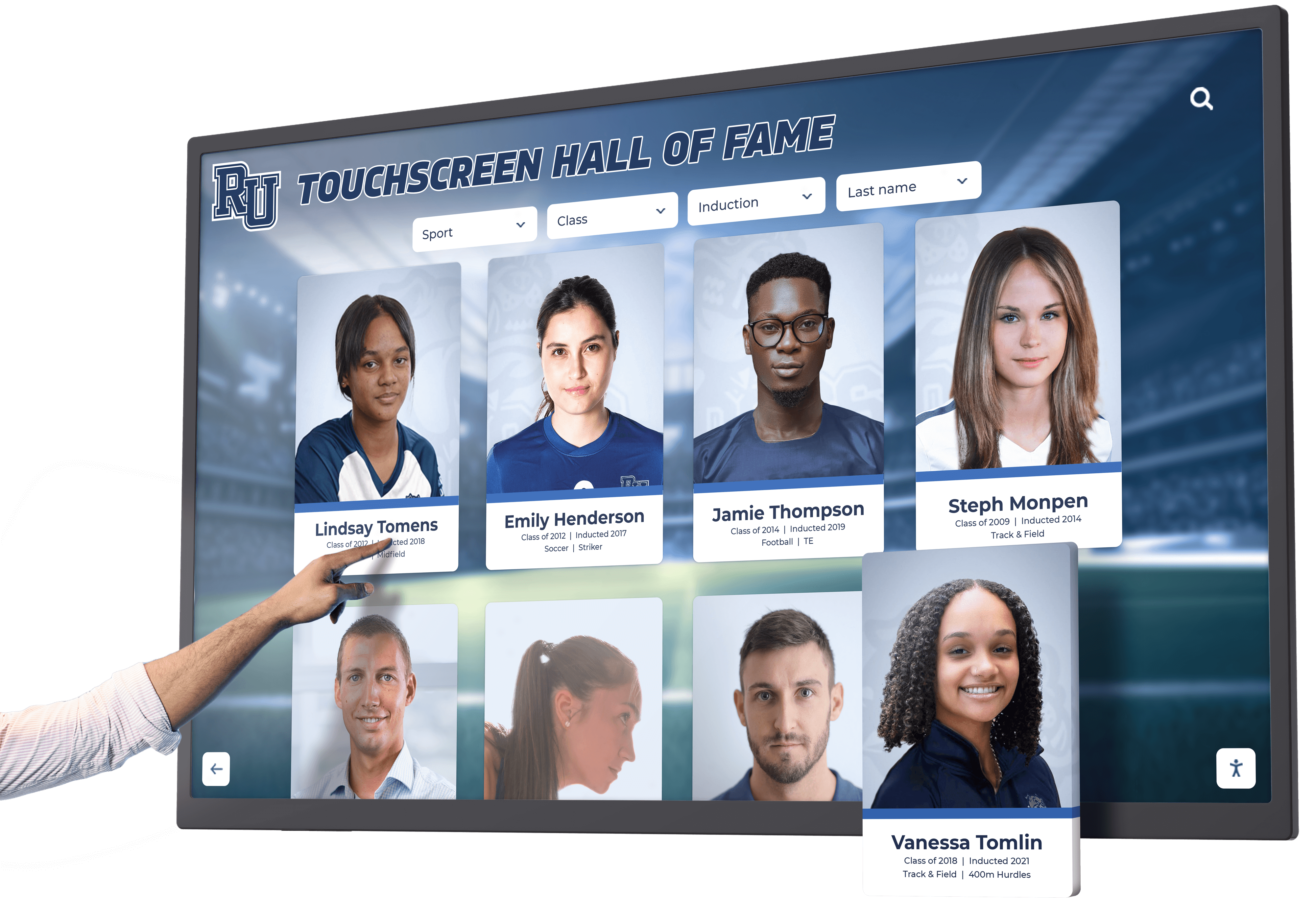
The Modern Era’s Top Goal Scorers: Ronaldo and Messi’s Unprecedented Dominance
Contemporary soccer has witnessed an extraordinary scoring phenomenon as Cristiano Ronaldo and Lionel Messi have shattered previous records while competing for goal-scoring supremacy across two decades of sustained excellence.
Cristiano Ronaldo: The All-Time Record Holder
Cristiano Ronaldo stands as the highest goal scorer in the history of professional soccer with over 900 officially recognized goals across all competitions. The Portuguese forward became the first player in history to reach this milestone in 2024, continuing to score prolifically even as he entered his late thirties.
Career Breakdown:
- Total Career Goals: 900+ official goals in competitive matches
- Club Goals: 700+ goals across Manchester United, Real Madrid, Juventus, and Al-Nassr
- International Goals: 130+ goals for Portugal (most international goals in men’s soccer history)
- Champions League: All-time leading scorer in UEFA Champions League history with 140 goals
- Goal-Scoring Peak: 61 goals in the 2014-15 season for Real Madrid
Ronaldo’s scoring excellence extends beyond volume to include remarkable consistency across multiple leagues, sustained performance over two decades, proficiency with both feet and heading ability, and clutch performances in crucial matches and tournaments. His physical preparation, dedication to training, and adaptation of his playing style as he aged allowed him to remain a prolific goal scorer well beyond typical peak years.
Lionel Messi: The Creative Genius Goal Scorer
Lionel Messi, while primarily celebrated for his playmaking brilliance, ranks as the second-highest goal scorer in modern football with nearly 900 career goals combining extraordinary finishing ability with unmatched creative vision.
Career Breakdown:
- Total Career Goals: 889 official competitive goals
- Club Goals: 700+ goals primarily for Barcelona, plus contributions at Paris Saint-Germain and Inter Miami
- International Goals: 109 goals for Argentina, including crucial goals in winning the 2021 Copa América and 2022 FIFA World Cup
- Single Calendar Year Record: 91 goals in 2012, the most goals scored by any player in a calendar year according to most sources
- La Liga: All-time leading scorer in Spanish league history
What distinguishes Messi’s scoring record is the aesthetic quality and variety of his goals—remarkable individual efforts dribbling through multiple defenders, perfectly placed free kicks, delicate chips, and precision finishing—combined with his role as both primary goal scorer and chief creator for teammates.
The Ronaldo-Messi Era in Perspective
The sustained excellence of both players across 15+ years at the highest level represents an unprecedented phenomenon in soccer history. Previous generations featured dominant goal scorers for 5-7 year peaks, but Ronaldo and Messi maintained elite scoring rates from their early twenties into their late thirties, accumulating totals that dwarf previous records.
Their rivalry, competition, and mutual respect elevated both players while providing soccer fans with two distinct goal-scoring philosophies: Ronaldo’s powerful, athletic, and clinical approach versus Messi’s creative, technical, and improvisational style. Schools and youth programs can draw inspiration from both approaches when developing athletic recognition programs that celebrate diverse playing styles and achievements.
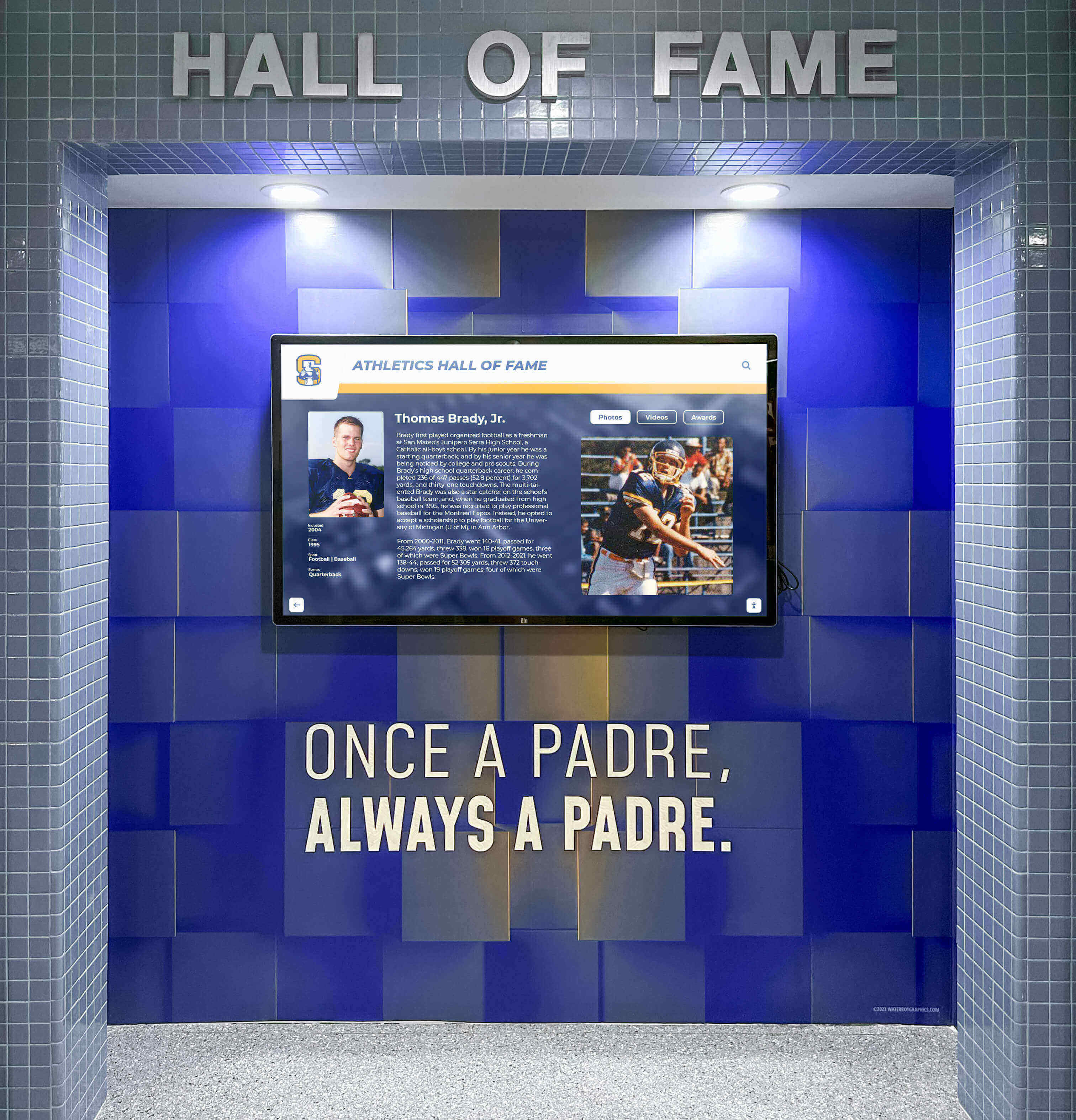
Historical Goal-Scoring Legends: Pre-Modern Era Excellence
Before the Ronaldo-Messi era dominated goal-scoring discussions, numerous legendary strikers established remarkable scoring records that captivated their generations and established enduring legacies.
Pelé: The Original King of Goals
Edson Arantes do Nascimento, universally known as Pelé, remains arguably soccer’s most iconic figure, celebrated not only for goal-scoring prowess but for revolutionizing attacking play and elevating soccer to global prominence.
Documented Achievements:
- FIFA Recognition: Acknowledged by FIFA as scoring over 1,200 goals when including friendly matches and exhibition games
- Competitive Goals: Estimated 757 official goals in competitive matches for club and country
- Brazilian League: 643 goals for Santos FC across an 18-year career
- World Cup Success: Three FIFA World Cup victories (1958, 1962, 1970), the only player to achieve this feat
- International Goals: 77 goals in 92 appearances for Brazil
Pelé’s significance extends beyond statistics to encompass his role in popularizing soccer globally, particularly through Santos FC’s international tours and his later career with the New York Cosmos helping establish soccer in the United States. His name remains synonymous with soccer excellence worldwide.
Josef Bican: The Disputed Record Holder
Josef Bican, an Austrian-Czech forward who played primarily between 1931 and 1955, is credited by FIFA’s statistical research as possibly the highest goal scorer in football history with an estimated 805+ goals, though precise numbers remain debated due to incomplete records from the era.
Bican played during World War II when many matches received minimal documentation, and his goal tallies include competitions in Austria, Czechoslovakia, and various wartime leagues. Despite uncertainty about exact figures, contemporary accounts confirm his extraordinary scoring ability and prolific output across a 25-year professional career.
Romário: The Clinical Finisher
Brazilian striker Romário claimed to have scored over 1,000 career goals when he retired, though this figure includes numerous friendlies and lower-division matches. His documented competitive goal total exceeds 700 goals, showcasing remarkable finishing ability and positioning intelligence.
Career Highlights:
- Dutch League Dominance: 165 goals in 167 matches for PSV Eindhoven
- Barcelona Success: 30 goals in 33 league matches in the 1993-94 season
- International Excellence: 55 goals in 70 appearances for Brazil
- World Cup Victory: Key player in Brazil’s 1994 World Cup triumph
Romário’s penalty box instincts, first-touch finishing, and ability to score from minimal chances made him one of soccer’s most efficient goal scorers, inspiring generations of strikers who studied his economical movement and clinical finishing.
Ferenc Puskás: The Hungarian Galloping Major
Ferenc Puskás scored an estimated 746 goals in competitive matches across his career in Hungary and Spain, showcasing extraordinary scoring ability despite playing primarily with his left foot.
Career Achievements:
- International Prowess: 84 goals in 85 appearances for Hungary (plus 4 goals in 4 matches for Spain)
- Real Madrid Legend: 242 goals in 262 matches during his Spanish career
- European Cup: Prolific scorer in European competition, helping Real Madrid dominate the 1950s and early 1960s
- Olympic Gold: Led Hungary to Olympic gold medal in 1952
Puskás played a central role in Hungary’s legendary “Magical Magyars” team of the 1950s, considered one of the greatest national teams in soccer history before the 1956 Hungarian Revolution disrupted his career and led to his move to Spain.
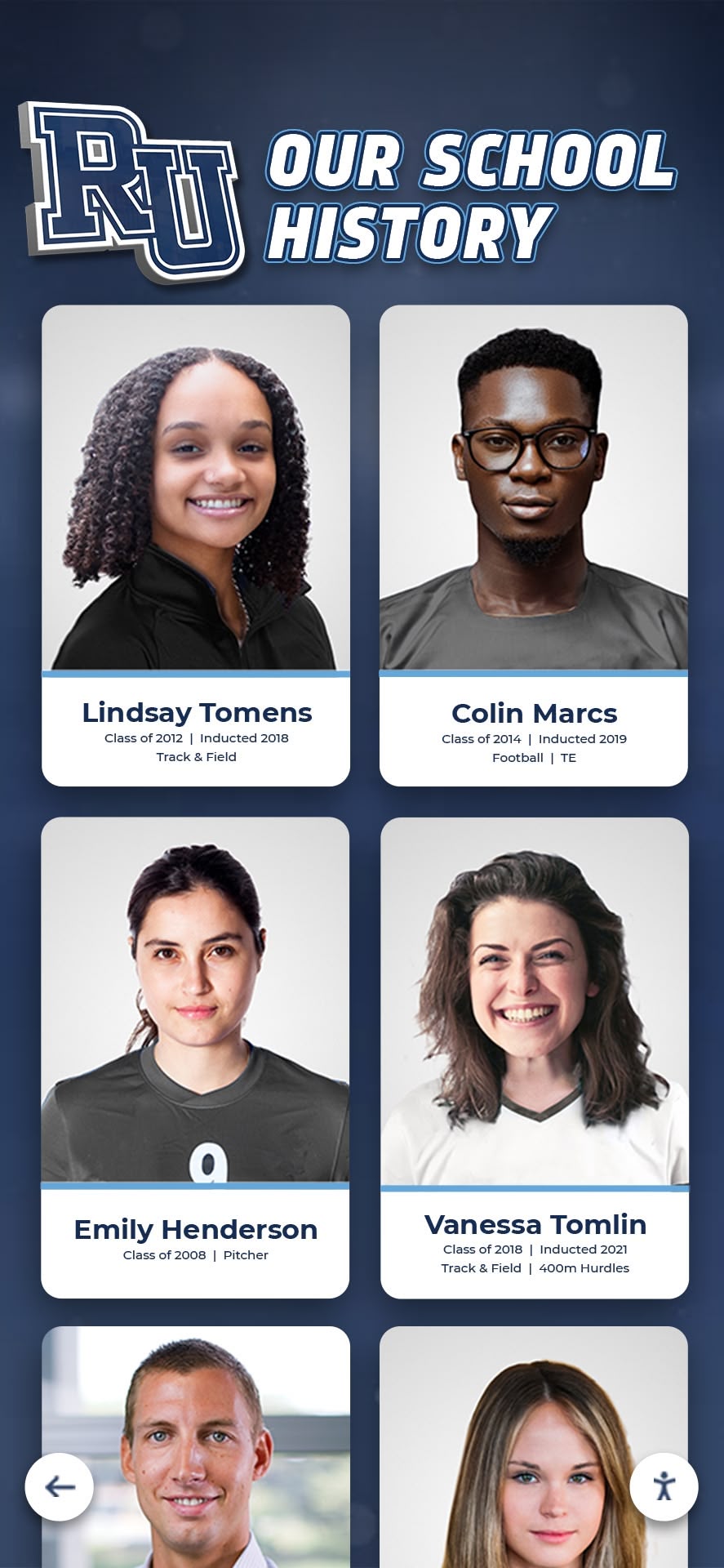
Contemporary Goal-Scoring Stars: The Next Generation
As Ronaldo and Messi’s careers wind down, several exceptional strikers have emerged as the next generation of prolific goal scorers, each bringing distinctive styles and achieving remarkable scoring rates.
Robert Lewandowski: The Modern Goal Machine
Polish striker Robert Lewandowski has established himself as one of the most consistent goal scorers of the 2010s and 2020s, combining technical excellence with intelligent positioning and remarkable consistency.
Career Statistics:
- Total Goals: 650+ career goals and counting
- Bayern Munich Dominance: 344 goals in 375 appearances, including a record 41 Bundesliga goals in the 2020-21 season
- Barcelona Contribution: Continued prolific scoring after transfer to Barcelona
- International Record: 80+ goals for Poland, becoming the national team’s all-time leading scorer
- Champions League: Regular scorer in Europe’s premier club competition
Lewandowski’s longevity—maintaining elite scoring rates into his mid-thirties—demonstrates modern training methods and professionalism extending peak performance years beyond previous generations.
Zlatan Ibrahimović: The Larger-Than-Life Scorer
Swedish legend Zlatan Ibrahimović scored over 570 career goals across an extraordinary career spanning multiple top European leagues, combining spectacular technical ability with exceptional physical attributes and unshakeable confidence.
Career Highlights:
- Multi-League Success: Prolific scoring in Sweden, Netherlands, Italy, Spain, France, England, and United States
- International Goals: 62 goals in 122 appearances for Sweden
- Longevity: Remained productive well into his forties, playing professionally until age 41
- Spectacular Goals: Known for acrobatic and memorable strikes, including numerous Goal of the Year awards
Ibrahimović’s career exemplifies adaptability, as he succeeded in dramatically different leagues and tactical systems while maintaining scoring consistency across two decades.
Luis Suárez: The Tenacious Striker
Uruguayan forward Luis Suárez has scored 550+ career goals combining natural finishing ability with relentless work rate and competitive intensity that made him one of his generation’s most feared strikers.
Career Achievements:
- Liverpool Excellence: 82 goals in 133 appearances, including 31 league goals in the 2013-14 season
- Barcelona Success: 198 goals in 283 matches, forming a legendary attacking trio with Messi and Neymar
- International Scoring: 69 goals for Uruguay, the nation’s all-time leading scorer
- Atletico Madrid: Continued scoring prolifically even after leaving Barcelona
Suárez’s combination of technical skill, physical strength, and determination made him effective in various tactical systems and playing styles throughout his career.
Karim Benzema: The Complete Forward
French striker Karim Benzema scored 500+ career goals while demonstrating the evolution of the modern forward position, combining goal scoring with exceptional playmaking and link-up play.
Career Statistics:
- Real Madrid Legend: 354 goals in 648 appearances across 14 seasons
- Champions League Excellence: Crucial goals in multiple European title runs, including outstanding 2021-22 campaign
- International Return: 37 goals for France after a lengthy absence from the national team
- Ballon d’Or: Won the prestigious individual award in 2022, recognizing his complete performances
Benzema’s career arc—from supporting player to primary star—demonstrates adaptability and the value of forwards who combine scoring with creating opportunities for teammates.
Erling Haaland: The Rising Phenomenon
Norwegian striker Erling Haaland represents the future of goal scoring, achieving unprecedented scoring rates while still in his early twenties that project toward potentially challenging all-time records if sustained across a full career.
Early Career Achievements:
- Remarkable Ratio: Over 270 career goals before age 25
- Manchester City Dominance: 52 goals in 53 appearances in his debut season (2022-23)
- Champions League Prowess: Youngest player to reach 40 Champions League goals
- Physical Attributes: Combines exceptional speed, strength, and finishing ability
Haaland’s scoring rate—approximately one goal per game across his professional career—exceeds even prime Ronaldo and Messi if sustained, making him potentially the most naturally gifted goal scorer in modern soccer history. Schools interested in recognizing record-breaking athletic achievements can draw inspiration from how professional clubs celebrate such extraordinary statistical accomplishments.
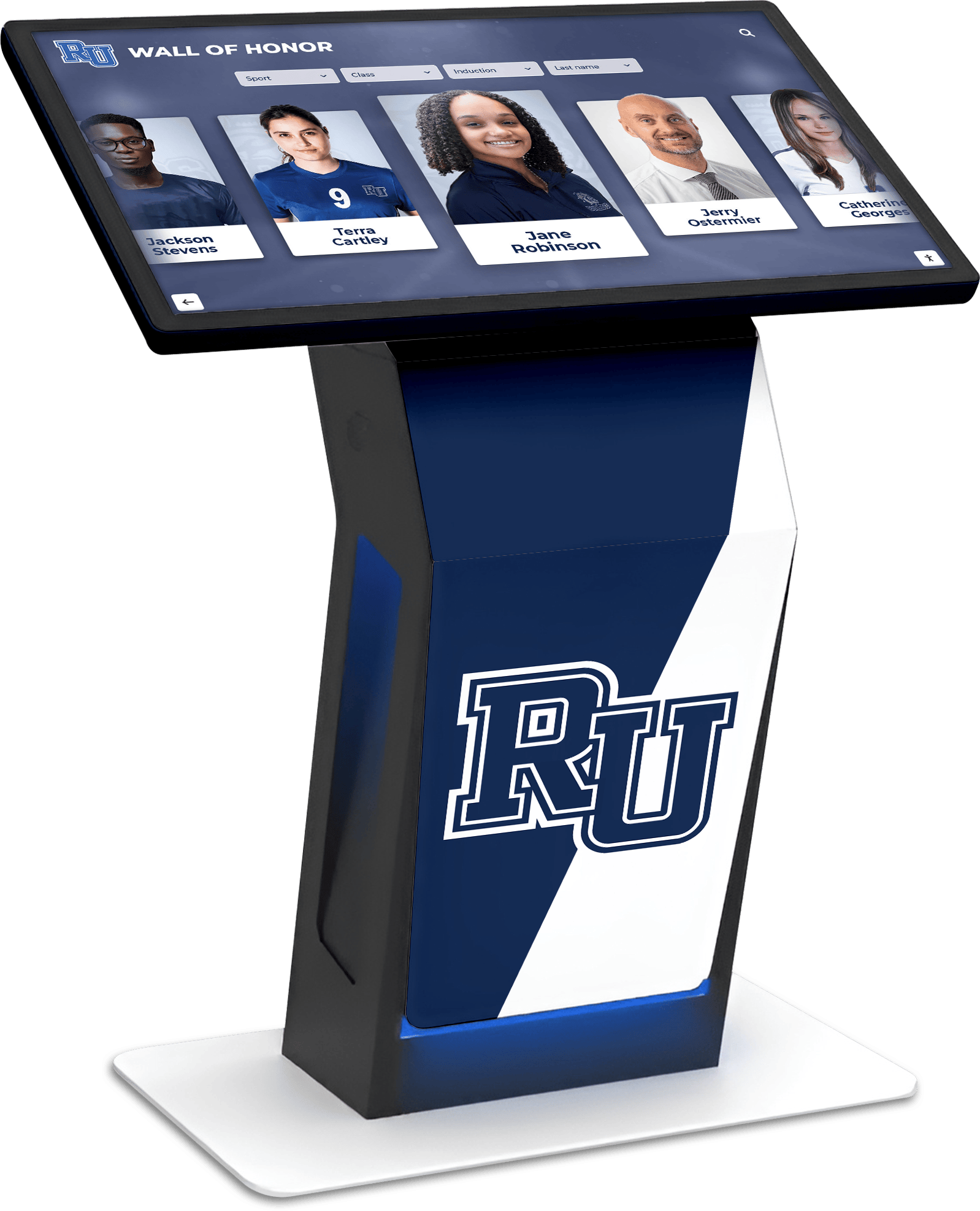
Women’s Soccer All-Time Top Scorers: Excellence on the Global Stage
Women’s soccer has produced extraordinary goal scorers whose achievements deserve equal recognition alongside their male counterparts, despite often receiving less historical documentation and media attention.
Christine Sinclair: The International Record Holder
Canadian forward Christine Sinclair holds the all-time record for most international goals scored by any player—male or female—with 190 goals in 331 appearances for Canada across a remarkable career spanning from 2000 to 2023.
Career Highlights:
- International Dominance: Surpassed Abby Wambach’s previous record of 184 international goals
- Olympic Success: Led Canada to back-to-back Olympic gold medals in 2020 and bronze in 2012 and 2016
- Professional Career: Prolific scoring in NCAA, Women’s Professional Soccer, and National Women’s Soccer League
- Longevity: Remained productive into her forties, exemplifying professionalism and dedication
Sinclair’s sustained excellence over two decades while carrying Canada’s offensive responsibilities made her one of soccer’s most respected players regardless of gender.
Marta Vieira da Silva: The Queen of Soccer
Brazilian forward Marta is widely considered the greatest female soccer player in history, combining extraordinary technical ability with prolific goal scoring that earned her six FIFA World Player of the Year awards.
Career Achievements:
- World Cup Goals: All-time leading scorer in FIFA Women’s World Cup history with 17 goals
- International Goals: 115+ goals for Brazil across 180+ appearances
- Professional Success: Prolific scoring across leagues in Brazil, Sweden, and United States
- Global Ambassador: Elevated women’s soccer’s profile worldwide through performances and advocacy
Marta’s creative goal scoring, dribbling ability, and technical excellence drew comparisons to Pelé and established standards of excellence for women’s soccer globally.
Abby Wambach: American Goal-Scoring Icon
American forward Abby Wambach retired as the world’s all-time leading international goal scorer (later surpassed by Sinclair) with 184 goals in 255 appearances while leading the United States to Olympic gold medals and World Cup victory.
Career Highlights:
- Heading Ability: Scored a remarkable percentage of goals with her head, utilizing exceptional timing and physical presence
- Clutch Performances: Famous for crucial goals in major tournaments, including late equalizers in elimination matches
- Olympic Gold: Won gold medals in 2004, 2008, and 2012
- World Cup Victory: Captured the 2015 FIFA Women’s World Cup in her final tournament
Wambach’s physical style and aerial dominance brought a different dimension to women’s soccer, demonstrating that diverse playing styles can achieve goal-scoring excellence.
Contemporary Stars: The Next Generation
Current women’s soccer features several prolific scorers continuing to rewrite record books:
- Alex Morgan: 120+ international goals for United States, World Cup and Olympic champion
- Sam Kerr: Australia’s all-time leading scorer with 70+ international goals, prolific in domestic leagues
- Vivianne Miedema: Netherlands’ record scorer, remarkable club goal-scoring rates in England
- Ada Hegerberg: Norway’s leading scorer, first female Ballon d’Or winner, Champions League dominance
These contemporary stars benefit from improved professional structures, training resources, and competitive opportunities that enable sustained excellence previously unavailable in women’s soccer. Schools developing inclusive athletic recognition programs should ensure equal prominence for both male and female athletes’ achievements.
Recognizing Your School’s Soccer Scoring Legends: Modern Digital Solutions
While professional soccer celebrates all-time scoring records through media coverage, hall of fame inductions, and stadium tributes, schools and youth organizations need effective systems for recognizing their own soccer goal-scoring achievements—from single-season records to career milestones to all-state honors.
Why Soccer Achievement Recognition Matters for School Programs
Effective recognition of soccer scoring excellence delivers multiple benefits for school athletic programs:
Preserving Program History:
Youth soccer programs build traditions and legacies worthy of documentation. Recording who scored the most goals in a season, which players reached milestone achievements, and what teams captured championships creates institutional memory that maintains connection to program history as years pass and individual memories fade.
Motivating Current Players:
When student-athletes see that previous players from their program achieved remarkable success—scoring 30 goals in a season, earning all-state honors, or breaking long-standing records—they gain concrete evidence that excellence is possible for them. Visible recognition establishes achievement standards that transform abstract possibilities into specific goals athletes pursue through dedicated training.
Strengthening Alumni Connections:
Former players who see their achievements recognized through professional displays maintain stronger emotional connections to programs throughout their lives. Recognition creates natural engagement touchpoints—induction ceremonies bring alumni back, updates trigger communication opportunities, and displays themselves spark conversations during visits—that often translate into increased support for current teams through attendance, volunteering, and giving.
Building Program Pride:
Soccer recognition programs contribute significantly to athletic program culture and school community identity. They create visible traditions distinguishing programs, generate positive stories for recruitment and media coverage, and strengthen collective pride among stakeholders. Over time, these recognition systems become integral to institutional identity. Schools can explore comprehensive strategies for highlighting student accomplishments across athletics and academics.
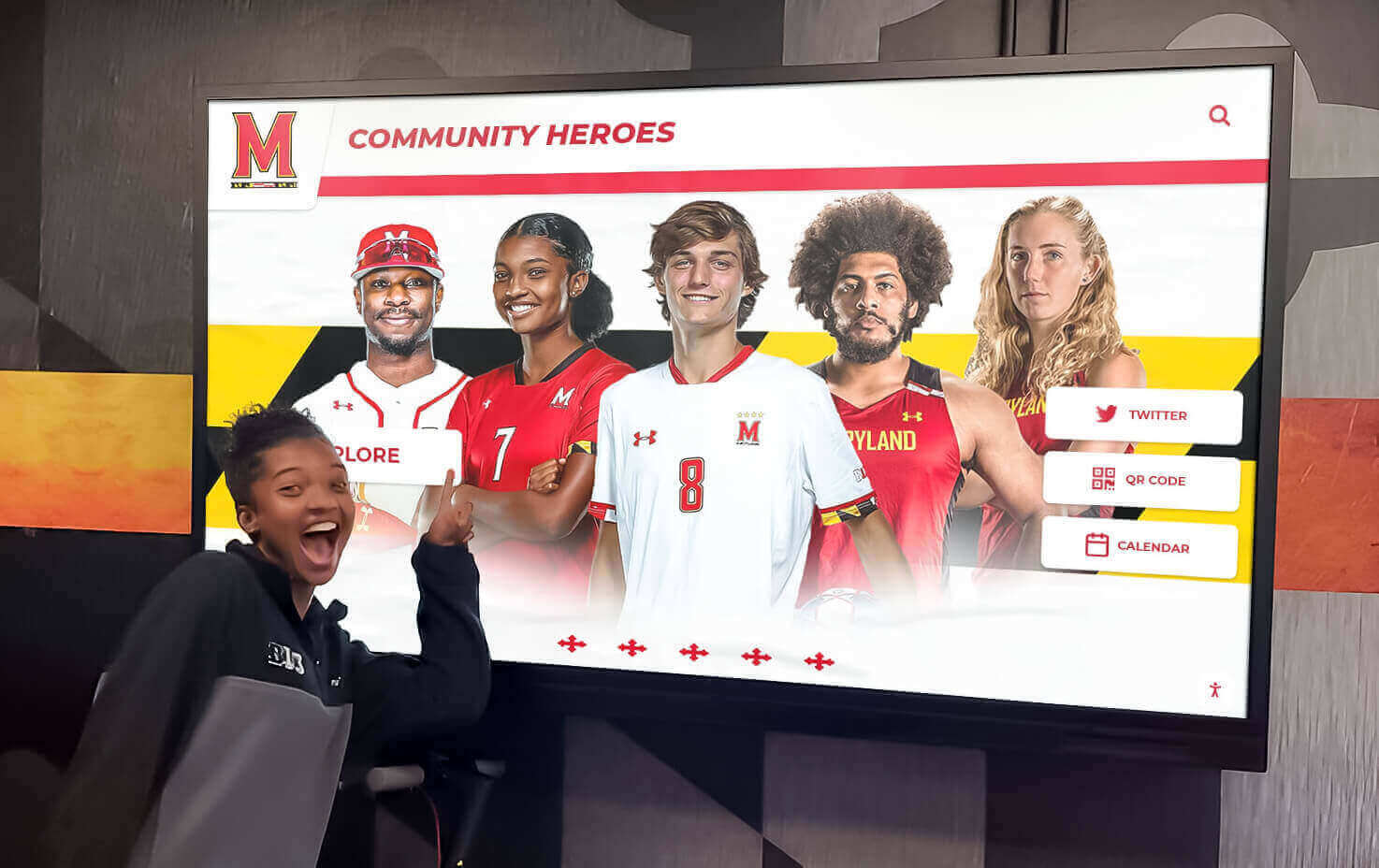
Establishing Soccer Recognition Criteria and Categories
Comprehensive soccer recognition programs acknowledge diverse achievements beyond simply all-time scoring records:
Goal-Scoring Milestones:
- Career goals scored (total across all seasons)
- Single-season scoring records
- Single-game scoring performances
- Goals in championship or playoff matches
- Game-winning and clutch goals
All-Conference and All-State Recognition:
- First-team all-conference selections
- All-state and all-region honors
- Conference player of the year awards
- State tournament recognition
Team Achievements:
- Conference championships
- State tournament appearances and victories
- Undefeated seasons
- Record-setting team performances
Complete Player Recognition:
- Players combining scoring excellence with assists
- Defensive players and goalkeepers with outstanding records
- Leadership, sportsmanship, and character awards
- Academic all-conference and scholar-athlete honors
Post-High School Success:
- College soccer scholarship recipients
- Players competing at collegiate levels
- Professional or semi-professional careers
- Coaching careers and giving back to programs
Creating diverse recognition categories ensures programs honor varied contributions rather than exclusively celebrating goal scorers. Programs should review strategies for recognizing athletic achievement comprehensively that value complete contributions to team success.
Traditional Recognition Limitations vs. Digital Solutions
Schools implementing soccer recognition face important decisions about display formats, with traditional approaches presenting significant limitations:
Traditional Physical Displays:
Physical recognition typically involves engraved plaques mounted on walls, photo displays with brass nameplates, or trophy cases showing awards and memorabilia. While these create classic, formal recognition, they suffer from:
- Space Constraints: Physical wall space eventually reaches capacity, forcing difficult decisions about what achievements receive recognition
- Update Costs: Each new honoree requires ordering, fabricating, and installing new physical materials at significant per-update expense
- Limited Information: Plaques typically include only names, years, and basic achievements without comprehensive statistics or stories
- Deterioration: Physical displays fade, tarnish, and deteriorate over time requiring maintenance and replacement
- Static Presentation: Once installed, traditional displays remain unchanged, offering no interactive engagement
Modern Digital Recognition Systems:
Digital soccer recognition platforms overcome traditional limitations while delivering superior long-term value:
Unlimited Capacity:
Digital systems accommodate unlimited honorees without physical space constraints. Whether recognizing 50 athletes or 500, the footprint remains constant. Programs can honor every deserving soccer player from institutional history—all-state selections from the 1980s receive equal prominence with last season’s leading scorers.
Instant Updates:
When a player breaks a single-season scoring record during Friday night’s match, displays can be updated by Saturday morning. Cloud-based content management systems enable updates from any internet-connected device in minutes rather than the weeks required for ordering, fabricating, and installing physical plaques.
Rich Multimedia Content:
Digital platforms enable comprehensive player profiles including:
- Professional photographs and action shots from memorable matches
- Career statistics including goals, assists, and season-by-season progression
- Video highlights of championship performances and record-breaking goals
- Written profiles celebrating achievements and personal journeys
- Post-graduation accomplishments and current status
- Audio interviews with athletes reflecting on their experiences
Interactive Exploration:
Touchscreen interfaces invite active engagement through search functions finding specific athletes by name, filtering by graduation year or achievement type, photo galleries browsing visually through program history, video playback of championship moments, and detailed statistical comparisons across different eras.
Cost-Effectiveness:
While digital systems require higher initial investment ($5,000-$15,000 for comprehensive installations), they eliminate ongoing per-update costs that accumulate rapidly with traditional recognition. Most schools achieve cost neutrality within 3-5 years while gaining dramatically superior capabilities. Understanding the complete benefits of digital athletic recognition helps schools evaluate the comprehensive value proposition.
Remote Accessibility:
Web-based viewing extends recognition beyond physical displays, allowing athletes to share achievements with family through social media while alumni can access program information from anywhere worldwide. This expanded reach amplifies recognition impact while strengthening connections with geographically dispersed stakeholders.
Solutions like Rocket Alumni Solutions provide purpose-built platforms designed specifically for school athletic recognition rather than generic digital signage systems requiring extensive customization. These specialized systems deliver intuitive content management, professional templates optimized for sports recognition, and ongoing support ensuring schools can maintain impressive displays without requiring technical expertise.
Implementing Soccer Recognition Programs: Practical Steps
Successfully launching soccer recognition programs requires systematic planning addressing content development, display selection, and ongoing operations:
Phase 1: Planning and Foundation
Define Recognition Objectives:
Clarify primary purposes—preserving history, motivating current players, engaging alumni, enhancing recruiting, or building program pride. Clear objectives guide subsequent decisions about criteria, formats, and resource allocation.
Establish Selection Criteria:
Document specific eligibility requirements, achievement thresholds, character standards, and recognition categories. Transparent criteria prevent confusion while establishing consistent frameworks for fair evaluation. Consider both statistical achievements and complete contributions including leadership, sportsmanship, and team success.
Form Selection Committee:
Assemble diverse committees including athletic administrators, coaches, alumni representatives, and community members. Staggered multi-year terms ensure continuity while regularly refreshing perspectives. Clear voting procedures requiring substantial committee support maintain program credibility.
Develop Budget:
Create realistic financial projections including initial investment (displays, content creation, installation) and ongoing operational costs (annual additions, maintenance, software subscriptions). Identify funding sources from athletic budgets, booster organizations, alumni donations, or dedicated fundraising campaigns.
Phase 2: Content Development
Identify Initial Honorees:
Begin with manageable inaugural classes ensuring diverse representation across achievement categories, graduation eras spanning program history, various positions and playing styles, and gender representation for co-ed programs. Starting with 10-20 initial honorees allows thorough profile development while establishing program foundations.
Gather Historical Information:
Systematically collect content through direct outreach to living alumni with questionnaires, archival research in yearbooks and newspapers, interviews with coaches and teammates, photo collection from institutional archives and personal sources, and statistical verification from official records. Digital asset management systems help organize collected materials systematically.
Create Compelling Profiles:
Develop comprehensive biographical narratives including career statistics and season-by-season progression, notable performances and memorable matches, team achievements during their playing years, individual honors and recognition received, post-soccer accomplishments and current status, and personal reflections on their experiences. Well-crafted profiles transform statistics into engaging stories that connect emotionally with viewers.
Phase 3: Display Implementation
Select Display Format:
Choose between traditional physical displays, digital interactive systems, or hybrid approaches based on budget availability and long-term cost considerations, space constraints and expansion plans, desired content depth and multimedia capabilities, technical resources for system management, and stakeholder preferences and institutional culture. Digital wall of fame screen size selection provides guidance for schools choosing display specifications.
Strategic Placement:
Install displays in high-visibility locations such as main entrance lobbies where visitors first encounter recognition, athletic hallways connecting to gymnasiums and fields, or cafeterias and common areas with high student traffic. Proper mounting height, lighting, and accessibility ensure maximum impact. Schools can reference best practices for school hall of fame installations when planning placement.
Content Loading and Testing:
Import player profiles, organize navigation structures, configure search and filtering options, verify all information displays correctly, and train staff on content management and system operation. Thorough testing before public unveiling prevents technical issues during launch events.
Phase 4: Launch and Ongoing Operations
Recognition Ceremonies:
Create memorable inaugural events celebrating initial honorees with formal programs, speeches from institutional leaders, display unveilings, receptions allowing attendee interaction, and media coverage amplifying reach. Annual induction ceremonies during homecoming or major events create traditions that alumni anticipate and attend regularly.
Annual Selection Cycles:
Establish predictable rhythms for fall nomination periods with community outreach, winter selection committee deliberations, spring honoree announcements and profile development, summer preparation and content updates, and fall induction ceremonies. Consistent annual cycles maintain engagement while ensuring qualified candidates receive timely recognition.
Content Enhancement:
Maintain engagement through profile enhancements as additional information becomes available, featured inductee rotations highlighting different athletes monthly or quarterly, achievement updates as alumni reach new milestones, and multimedia additions enriching existing content. Regular updates keep displays fresh and encourage repeated viewing.
Schools can benefit from reviewing comprehensive digital recognition content planning strategies that maintain engaging displays requiring manageable staff time investment.
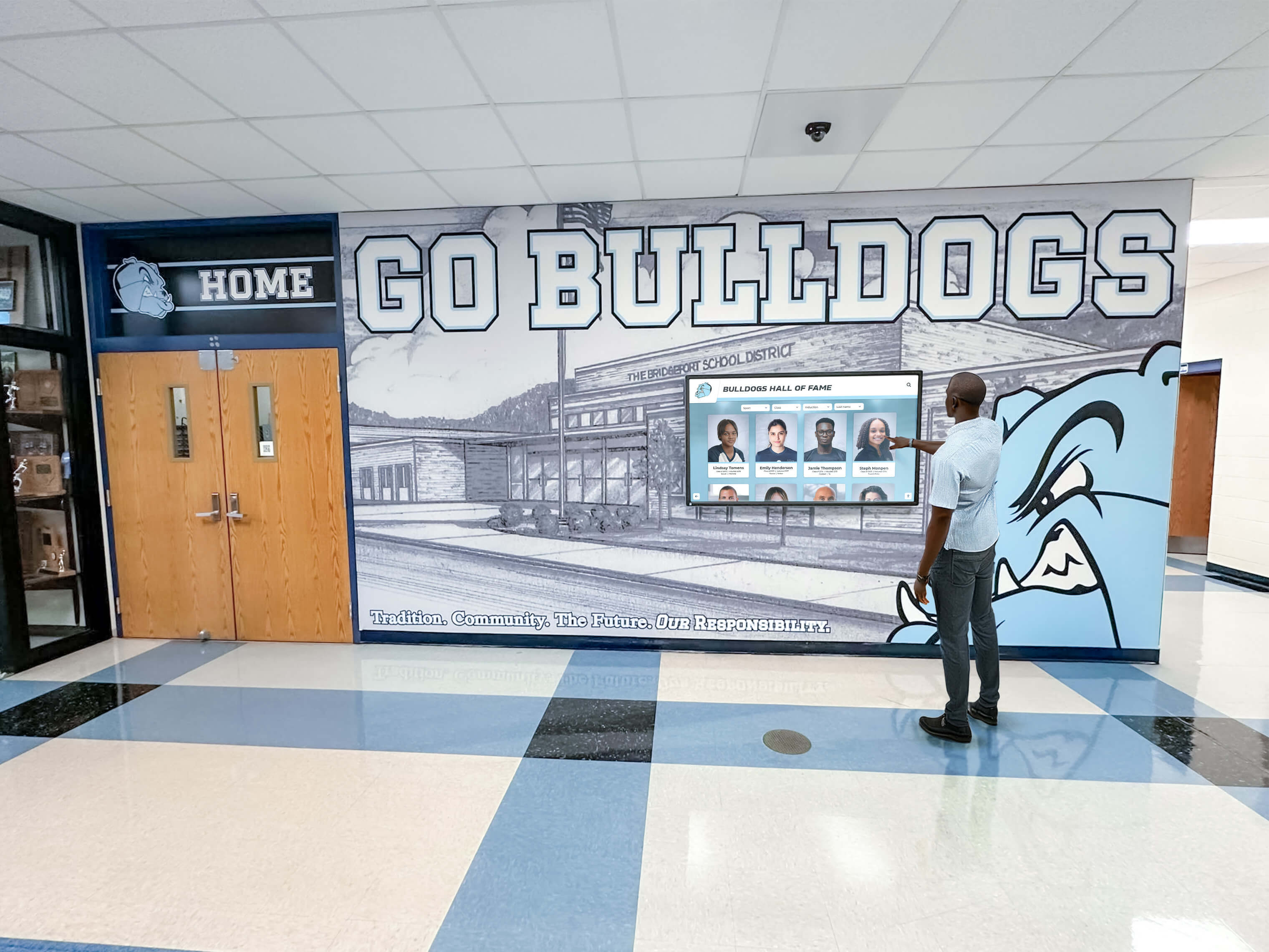
Integrating Soccer Recognition with Multi-Sport Programs
The most effective recognition systems integrate soccer achievements within broader athletic recognition programs celebrating excellence across all sports:
Comprehensive Athletic Recognition
Digital recognition platforms excel at multi-sport programs because unlimited capacity prevents competition for limited space. Soccer goal-scoring records receive comprehensive coverage alongside football achievements, basketball milestones, track and field records, volleyball honors, and distinguished athletes from every program.
Schools can implement unified systems showcasing:
- Sport-specific record boards for soccer, football, basketball, and all competitive sports
- All-state and all-conference athlete recognition regardless of sport
- Championship team celebrations across all programs
- Academic athlete honors celebrating classroom excellence
- Leadership and character awards recognizing values
- College athlete recognition for scholarship recipients
This comprehensive approach ensures all athletic achievement receives appropriate visibility while maintaining sport-specific sections for detailed profiles celebrating individual excellence within each program. Resources on creating multi-sport digital record boards provide implementation guidance for comprehensive athletic recognition.
Soccer-Specific Features Within Broader Displays
Within multi-sport recognition systems, soccer-specific sections can include:
Position-Specific Recognition:
- All-time leading goal scorers (forwards and midfielders)
- Assist leaders recognizing playmakers
- Defensive standouts and clean sheet records for defenders
- Goalkeeper records including saves and shutouts
Team Achievement Celebrations:
- Conference championship teams
- State tournament qualifications and victories
- Undefeated seasons and winning streak records
- Tournament and rivalry game achievements
Statistical Leaderboards:
- Career goals scored
- Single-season scoring records
- Career assists
- Goals and assists combined
- Game-winning goals
- Playoff and championship scoring
Individual Award Winners:
- Player of the Year honors
- All-state and all-conference selections
- Sportsmanship and character awards
- Scholar-athlete recognition
Properly designed systems allow intuitive navigation between overall athletic recognition and sport-specific detailed information, enabling visitors to explore comprehensively while finding specific information efficiently.
Measuring Soccer Recognition Program Success
Effective recognition programs demonstrate value through both quantitative metrics and qualitative observations:
Quantitative Indicators
Digital Display Analytics:
- Number of interactions with touchscreen displays
- Time spent exploring soccer content
- Most-viewed player profiles and statistics
- Peak engagement times and patterns
- Web traffic to online recognition platforms
Program Performance Indicators:
- Soccer program participation rates
- Number of athletes reaching recognition milestones
- Alumni engagement and giving rates specific to soccer programs
- Prospective student interest during recruitment visits
- Media coverage of program achievements
Cost Analysis:
- Eliminated traditional display update expenses
- Reduced staff time managing recognition
- Avoided replacement costs for deteriorating physical displays
- Return on investment calculations based on engagement metrics
Qualitative Assessment
Athlete Perspectives:
Regular feedback from student-athletes provides crucial insights about how meaningful they find recognition, whether displays influence their goal-setting and motivation, how recognition affects program pride, and ideas for improving recognition experiences.
Coach Observations:
Coaches notice cultural shifts including whether athletes reference hall of fame members in team discussions, whether players set specific achievement goals based on program records, and whether underclassmen engage with program traditions and history.
Alumni and Community Feedback:
Broader stakeholder perspectives from alumni reactions during campus visits, family comments at recognition events, community awareness of program achievements, and media coverage of recognition activities provide valuable external validation.
The most important impacts often involve qualitative cultural shifts—current athletes feeling connected to program history, school community perception of athletics improving, athletes demonstrating pride in representing traditions, and historical achievements inspiring current teams during challenging seasons.
Conclusion: Celebrating Goal-Scoring Excellence at All Levels
Soccer’s all-time top scorers represent extraordinary achievement spanning from local youth programs to the highest levels of international competition. From Cristiano Ronaldo’s unprecedented 900+ career goals and Lionel Messi’s creative brilliance to Christine Sinclair’s international record and the emerging dominance of Erling Haaland, goal-scoring excellence captivates fans while inspiring young players to pursue their own soccer dreams.
Understanding the complete history of soccer’s greatest goal scorers—from disputed historical records of Josef Bican and Pelé to the modern era’s unprecedented statistical dominance to contemporary stars redefining what’s possible—provides valuable context for appreciating offensive excellence across different eras and playing styles. The diversity of approaches represented by these legends demonstrates that multiple pathways exist to goal-scoring greatness, from pure athleticism to technical brilliance to intelligent positioning.
For schools and youth organizations, the achievements of professional soccer legends provide inspiration for developing meaningful recognition programs celebrating their own goal scorers and complete players. Modern digital recognition solutions overcome the limitations of traditional physical displays while delivering superior long-term value through unlimited capacity, instant updates, rich multimedia content, interactive features, and cost-effectiveness that provides excellent return on investment.
Whether honoring career scoring leaders, celebrating all-state selections, recognizing championship teams, or documenting complete program history, purpose-built solutions like those from Rocket Alumni Solutions provide intuitive platforms that schools can manage confidently without technical expertise. These systems transform recognition from static name lists into engaging experiences that honor past excellence while inspiring current athletes to pursue their own places in program history, creating connections between generations of soccer players united by love of the beautiful game.
By properly recognizing soccer achievement at the school level—celebrating both statistical excellence and complete contributions including leadership, sportsmanship, and character—programs create cultures where current players understand that their achievements matter, will be remembered, and will inspire future athletes who follow in their footsteps. This continuity of recognition and tradition strengthens programs while ensuring that today’s goal-scoring heroes receive the lasting honor their achievements deserve.
Visit Rocket Alumni Solutions to explore how modern recognition technology transforms soccer achievement celebration from space-constrained physical displays into comprehensive digital experiences that honor program traditions while engaging contemporary audiences through intuitive, professional platforms designed specifically for school and organizational athletic recognition.
